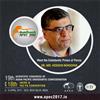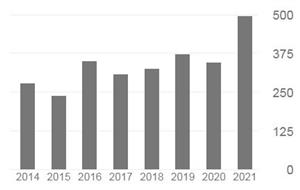Bonding to Caries Affected Dentine
Abstract
Objectives: Dentine replacement materials are often placed over caries affected dentine (CAD). The aim of this study was to compare the bonding characteristics and interactions of selected hydraulic calcium silicate-based dentine replacement materials to CAD and sound dentine.
Methods: Three hydraulic calcium silicate-based dentine replacement materials were assessed: Retro MTA, Biodentine and Theracal LC. Material characterization was done by scanning electron microscopy and X-ray diffraction analyses. Blocks of sound and CAD were prepared and standardized by Vickers microhardness testing. Half of the affected and sound dentine blocks were pretreated with 5.25% NaOCl prior to material placement. The materials were stored either for 1 week or 24 weeks in 37°C in fully saturated conditions. Shear bond strength was assessed at both time periods. Radiopacity of the interfacial dentine was also evaluated to assess the remineralization potential of the dentine replacement materials.
Results: The reaction of Theracal was slower than that of the water-based materials. The bond strengths of different materials did not differ after 1 week (P>0.05). The bond strength of Biodentine and Retro MTA increased over time but no change was observed for Theracal. NaOCl pre-treatment deteriorated the bond strength to sound dentine but improvement was observed in affected dentine. Radiopacity changes were observed after 24 weeks.
Significance: Biodentine and Retro MTA showed better bonding to CAD. Pretreatment with NaOCl improved the bond strength of dentine replacement materials to CAD.
Keywords: Caries, Characterization, Dentine Replacement Materials, Shear Bond Strength, Demineralized Dentine, Remineralization.














